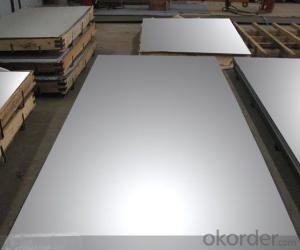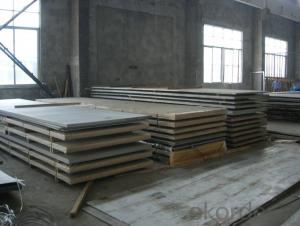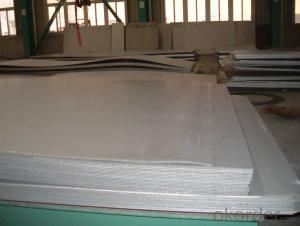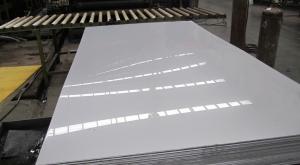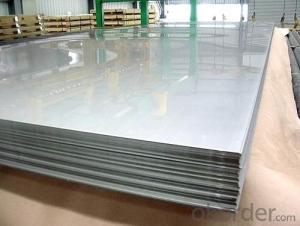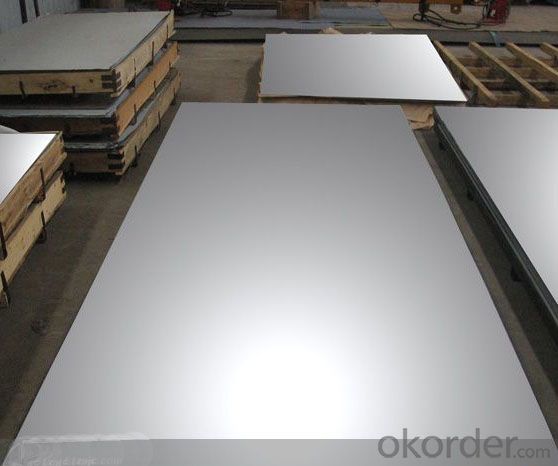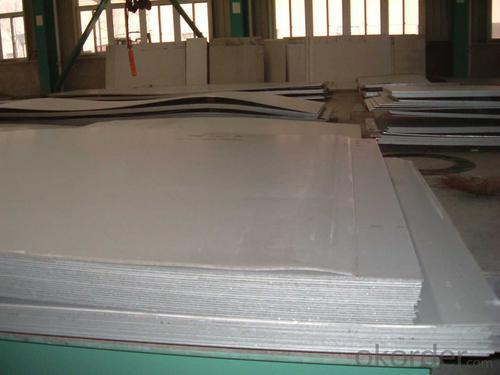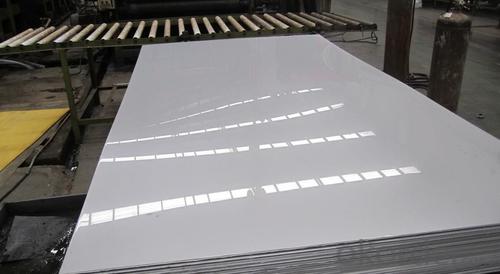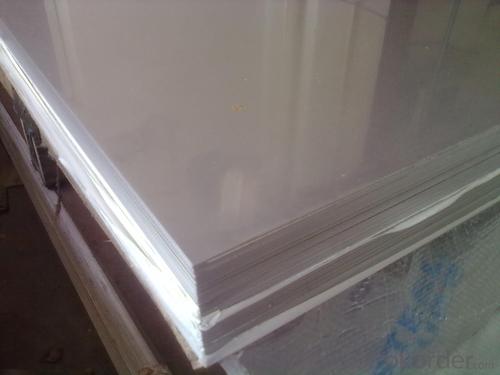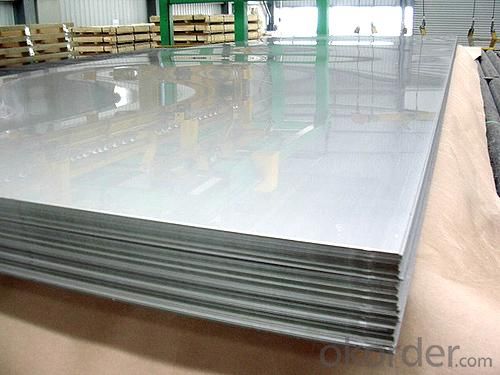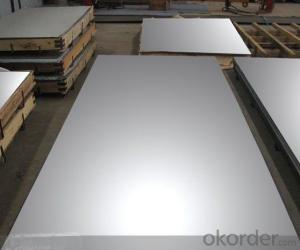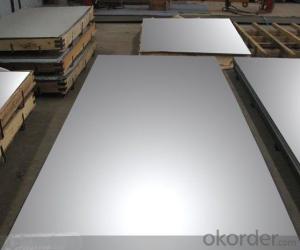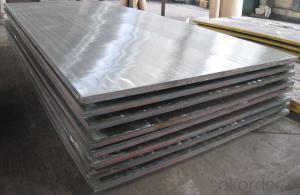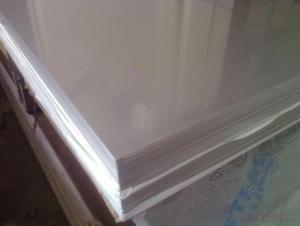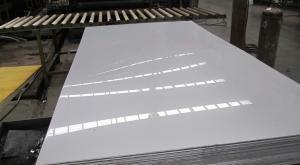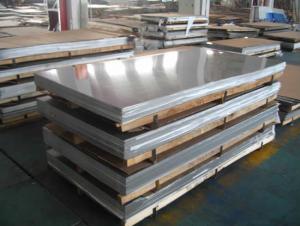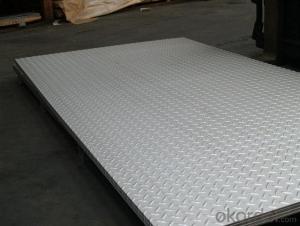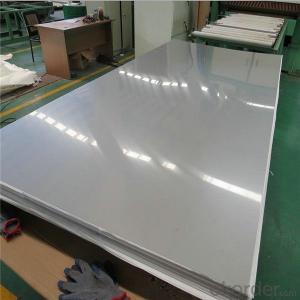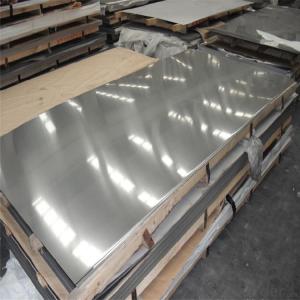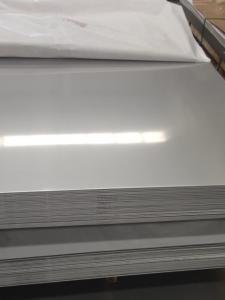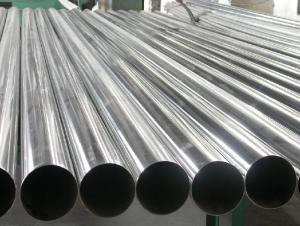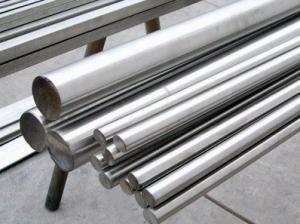Stainless Steel 304 sheet and plate guarantee low pricing
- Loading Port:
- Shanghai
- Payment Terms:
- TT or LC
- Min Order Qty:
- 1000 m.t
- Supply Capability:
- 1000000 m.t/month
OKorder Service Pledge
OKorder Financial Service
You Might Also Like
Stainless Steel 304 sheet and plate guarantee low pricing
Description of Stainless Steel 304 sheet and plate guarantee low pricing:
Stainless steel is a production which not easy rust,acid resistance and corrosion resistance,so it is widelyused in light industry,heavy industry,daily necessities and the decoration industry.my company long-termsupply stainless steel porducts including:stainless steel sheet,stainless steel coil and stainless steel tube.
Main Features of Stainless Steel 304 sheet and plate guarantee low pricing:
•Escalator, Elevator, Doors
•Furniture
•Production tools, Kitchen appliances, freezers, cold rooms
•Auto Parts
•Machinery and Packaging
•Equipment and Medical devices
•Transport system
Maintance of Stainless Steel 304 sheet and plate guarantee low pricing:
(1) Regular cleaning and maintenance
(2) Pay attention to prevent the occurrence of the phenomenon of surface scratches
(3) Use soap, weak detergent or warm water to remove surface dust, dirt
(4) In addition to the surface of the binder with alcohol or an organic solvent (ether, benzene)
(5) Use neutral detergent or ammonia solution in addition to surface oil
(6) With 10% nitric acid or abrasive detergent in addition to the surface of the embroider caused by the dirt.
Applications of Stainless Steel 304 sheet and plate guarantee low pricing:
Stainless steel’s resistance to corrosion and staining, low maintenance and familiar lustre make it an ideal material for many applications. There are over 150 grades of stainless steel, of which fifteen are most commonly used. The alloy is milled into coils, sheets, plates, bars, wire, and tubing to be used in cookware, cutlery, household hardware, surgical instruments, major appliances, industrial equipment Storage tanks and tankers used to transport orange juice and other food are often made of stainless steel, because of its corrosion resistance and antibacterial properties. This also influences its use in commercial kitchens and food processing plants, as it can be steamcleaned and sterilized and does not need paint or other surface finishes..
Specifications of Stainless Steel 304 sheet and plate guarantee low pricing:
Description | steel sheet,hot rolled steel sheet,cold rolled steel sheet, steel sheet,sheet,steel plate |
Standard | ASME, ASTM, EN ,BS,GB,DIN, JIS etc |
Application | Steel sheet applies to construction field, ships building industry, petroleum & chemical industries, war and electricity industries, food processing and medical industry, boiler heat exchanger, machinery and hardware fields. |
Packaging | Standard export sea-worthy packing |
Delivery time | 10-30 days |
Quality | No.1 |
Productivity | 500 tons/Day |
Note | Our company has cooperative relation between the domestic agents. Stainless steel sheet can be made accordingto the customers requirements. Fasten delivery. Quality assured. |
Contacts | If you have any question,please feel free contact me. |
Surface Finish Characteristics of Stainless Steel 304 sheet and plate guarantee low pricing:
| Surface finish | Characteristics and application |
| 2B | The surface brightness and flatness of no2B is better than no2D. then through a special surface treatment to improve its mechanical properties,No2B could nearly satisfy comprehensive uses. |
| No.1 | Polished with abrasive belt of grit#100-#200, have better brightness with discontinuous coarse stria, used as inner and external ornaments for building, electrical appliances and kitchen utensils etc. |
| No.4 | Polished with abrasive belt of grit #150-#180,have better brightness with discontinuous coarse stria, but thinner than No3, are used as bathtub buildings inner and external ornaments electrical appliances kitchen utensils and food processing equipment etc. |
| HL | Polished with abrasive belt of grit #150-#320 on the NO.4 finish and has continuous streaks, mainly used as buildings ornaments elevators, door of building, frontal plate etc. |
| BA | Cold rolled, bright annealed and skin-passed, the product have excellent brightness and good reflexivity like mirror, kitchen apparatus, ornament etc. |
| 8K | The product have excellent brightness and prefer reflexivity can to be the mirror. |
Images of Stainless Steel 304 sheet and plate guarantee low pricing:
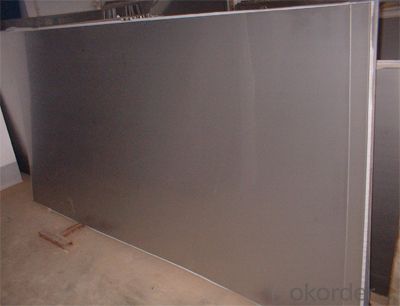

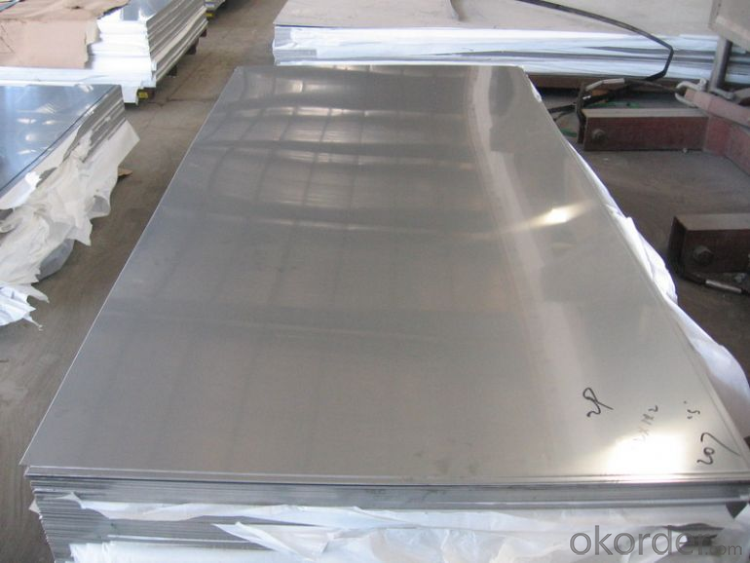
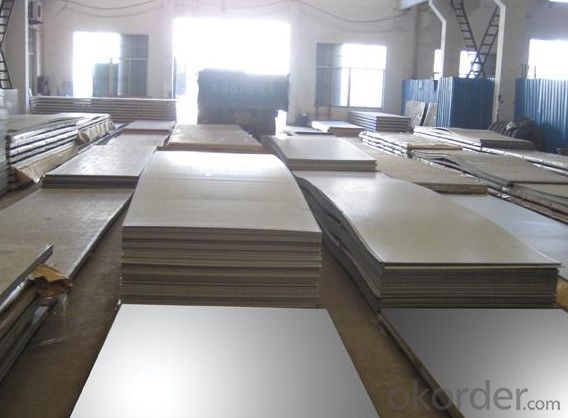
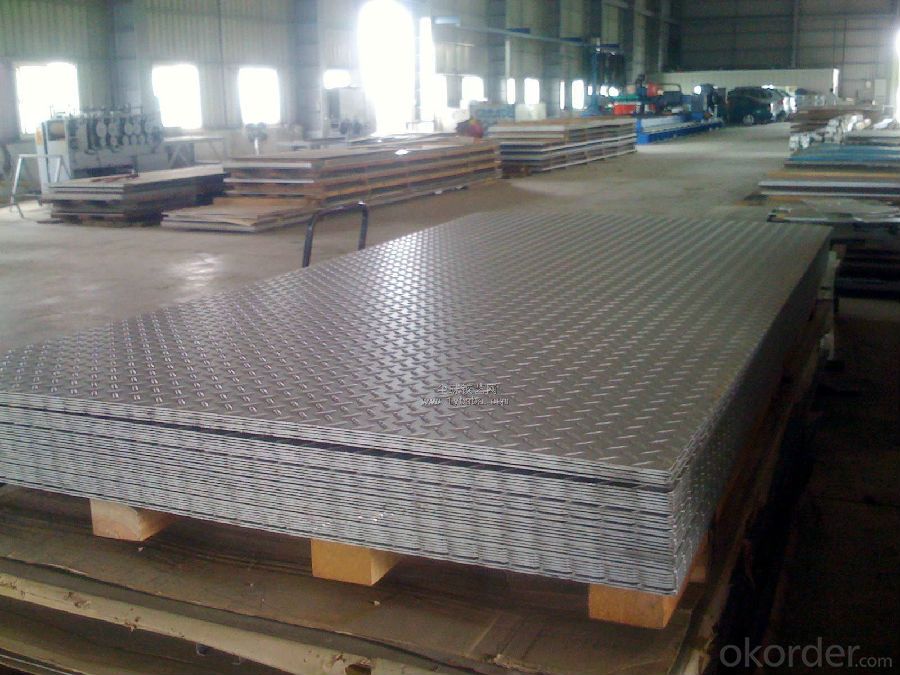
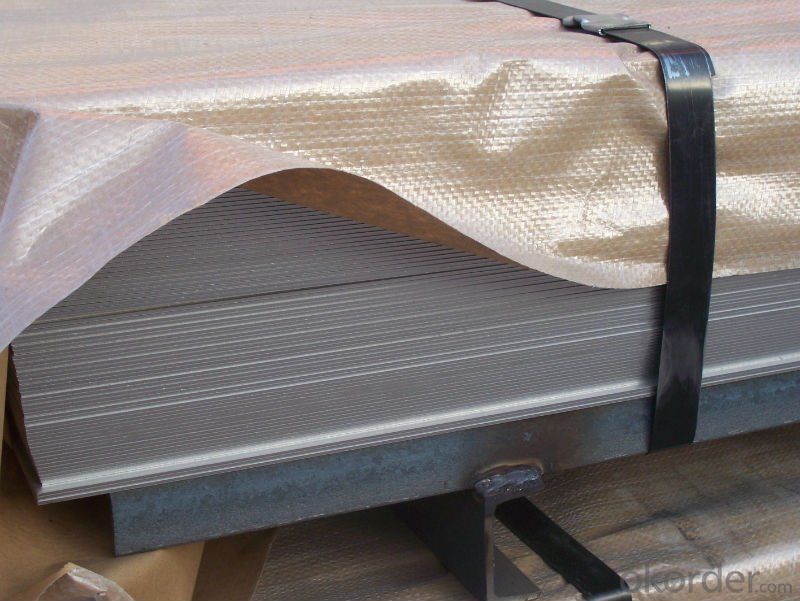
Sandard Seaworth Packing(wooden packing with water proof paper):
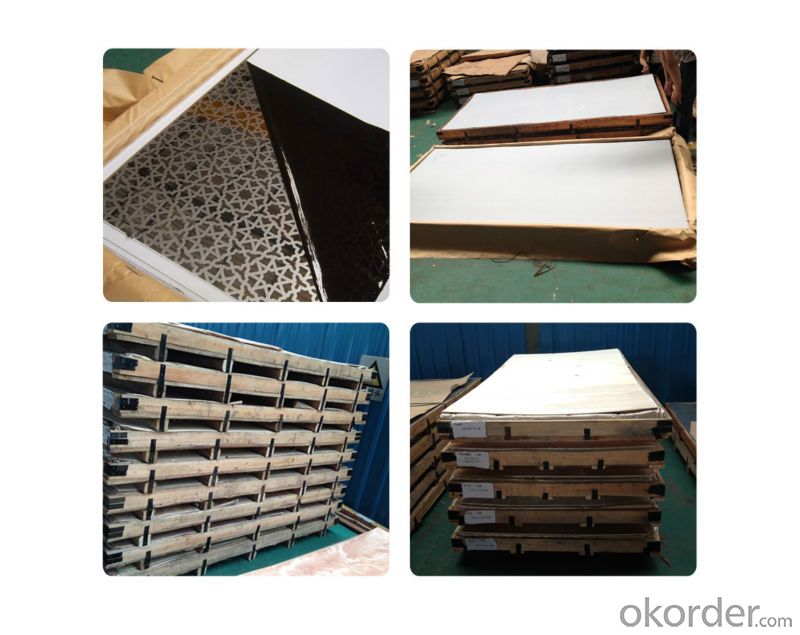
FAQ:
1. What are we supplying?
We are specialized in producing stainless steel coil, stainless steel (plate/sheet), and duplex stainless steel for a prelonged period. We are currently supplying grade of steel of 201/202,304/304L, 310S/309S/316L/316Ti/321, 410/420/430/443/444/409L, and 904L.
2. How Many years experience do we have?
We have been exported to more than 20 countries in the past 15 years.
3. How long do we usually reply your request?
We always reply our customer within 24 hours.
Our company adheres to the tenet of "survival by quality, build brand by reputation, win market by prices and innovate to develop", has developed international markets and the products are well sold in many countries as Singapore, Indonesia, South Korea, Dubai, Pakistan, Sri Lanka, Vietnam, Iran, Malaysia, Mexico, Chile, Brazil, Holland, Italy, Belgium, Russia, Moldova, Paraguay, Uruguay, Germany, Spain, USA etc. More than 40 countries.; commonly we have more than 500tons stainless steel materials in stock; so w can arrange the soonest delivery too; also we hope we will have chance to cooperate with your esteemed company!
- Q: Can stainless steel sheets be used for electrical conductivity?
- Typically, stainless steel sheets are not employed for electrical conductivity. Stainless steel is renowned for its exceptional resistance to corrosion and durability, rendering it apt for a diverse range of applications like kitchen appliances, construction materials, and industrial equipment. Nevertheless, stainless steel falls short in terms of conductivity compared to metals such as copper or aluminum. Consequently, materials with superior electrical conductivity properties are commonly preferred for electrical purposes.
- Q: What specifications do stainless steel plates have?
- General door with 304 doors or rust does not look good they will call you to change at a loss if you can go ah edge thickness wall door frame to plate factory they can count you can also tell them such as simple frame or Rome head of the door is generally
- Q: What kind of welding rod is used for 310S stainless steel?
- ER310 stainless steel welding wire, molten gold containing 25Cr-20Ni, used for welding 310S stainless steel, suitable for welding of dissimilar metals and welding of alloy steel and high carbon steel.
- Q: Are stainless steel sheets good for pressure vessels?
- Stainless steel sheets have gained popularity as a preferred choice for pressure vessels due to their durability, reliability, and ability to meet the demanding requirements of such applications. Commonly employed, they are considered to be an excellent option. Stainless steel possesses exceptional resistance to corrosion, high strength, and commendable mechanical properties, rendering it suitable for applications that necessitate withstanding high pressures. Moreover, stainless steel exhibits remarkable heat resistance, a pivotal trait in pressure vessels where exposure to elevated temperatures is likely. It is also important to highlight that stainless steel lends itself to easy formation and welding, facilitating the fabrication of intricate shapes and designs required for pressure vessel construction. All in all, stainless steel sheets are a favored material for pressure vessels due to their ability to endure, their dependability, and their capacity to fulfill the demanding prerequisites of such applications.
- Q: Can stainless steel sheets be used for marine propellers?
- Yes, stainless steel sheets can be used for marine propellers. Stainless steel is a popular choice for marine propellers due to its excellent corrosion resistance properties. The high levels of chromium in stainless steel make it resistant to rust and other forms of corrosion, even in saltwater environments. Additionally, stainless steel offers good strength and durability, making it suitable for withstanding the harsh conditions of marine environments. Stainless steel propellers are often preferred for boats and ships as they require less maintenance and have a longer lifespan compared to other materials. However, it is important to choose the appropriate grade of stainless steel for marine propellers to ensure optimal performance and longevity.
- Q: Are stainless steel sheets suitable for chemical tanks?
- Yes, stainless steel sheets are suitable for chemical tanks. Stainless steel is known for its excellent resistance to corrosion, making it an ideal material for storing and transporting chemicals. It has high strength and durability, making it capable of withstanding harsh chemicals and extreme temperatures. Stainless steel also has a smooth, non-porous surface, which prevents the absorption of chemicals and facilitates easy cleaning. Additionally, stainless steel is non-reactive, meaning it does not react with most chemicals, ensuring the integrity of the stored substances. Overall, stainless steel sheets are a reliable and popular choice for chemical tanks due to their resistance to corrosion, strength, durability, and non-reactivity.
- Q: Is there any magnetism in 304 stainless steel?
- The magnetic material itself is not magnetic, because of some processing reasons, resulting in magnetic, but its relatively weak magnetic, and other carbon steel material is still different. 304, the magnetic properties of stainless steel is weak magnetic, if it is strong magnetic, it is not true 304 stainless steel.
- Q: Can stainless steel sheets be used for aerospace fasteners?
- Yes, stainless steel sheets can be used for aerospace fasteners. Stainless steel is a commonly used material in aerospace applications due to its high strength, corrosion resistance, and ability to withstand extreme temperatures. It is often used for fasteners such as screws, bolts, and nuts in aerospace engineering.
- Q: What is the strength of stainless steel sheets?
- Several factors contribute to the strength of stainless steel sheets. Firstly, stainless steel is an alloy of iron and chromium, which grants it excellent resistance to corrosion. This corrosion resistance renders stainless steel sheets ideal for various applications, even in environments where they may be exposed to moisture, chemicals, or extreme temperatures. In addition to corrosion resistance, stainless steel sheets possess high tensile strength. Tensile strength refers to the maximum amount of tensile stress a material can endure before failure. Stainless steel sheets have a high tensile strength, enabling them to withstand heavy loads and resist deformation or breaking under pressure. Moreover, stainless steel sheets exhibit exceptional durability and hardness. This means they can endure wear and tear, making them suitable for applications that require long-lasting and robust materials. Stainless steel sheets also have a high resistance to heat, allowing them to maintain their structural integrity even at elevated temperatures. Another advantage of stainless steel sheets is their versatility. They can be shaped and sized in various ways, making them suitable for a wide range of applications. Additionally, stainless steel sheets can be easily formed, welded, and machined, allowing for customization to meet specific requirements. Overall, the strength of stainless steel sheets lies in their corrosion resistance, high tensile strength, durability, hardness, heat resistance, and versatility. These properties establish stainless steel sheets as a reliable and trusted material in numerous industries, including construction, automotive, aerospace, food processing, and many others.
- Q: Can stainless steel sheets be cut to custom sizes?
- Yes, stainless steel sheets can be cut to custom sizes. Stainless steel is a versatile material that can be easily cut and fabricated into various shapes and sizes to meet specific requirements. There are several methods for cutting stainless steel sheets, including shearing, laser cutting, water jet cutting, and plasma cutting. These techniques allow for precise and accurate cuts, ensuring that the stainless steel sheets can be tailored to the desired dimensions. Whether it is for industrial, commercial, or residential applications, stainless steel sheets can be easily customized to fit specific needs.
Send your message to us
Stainless Steel 304 sheet and plate guarantee low pricing
- Loading Port:
- Shanghai
- Payment Terms:
- TT or LC
- Min Order Qty:
- 1000 m.t
- Supply Capability:
- 1000000 m.t/month
OKorder Service Pledge
OKorder Financial Service
Similar products
Hot products
Hot Searches
Related keywords
